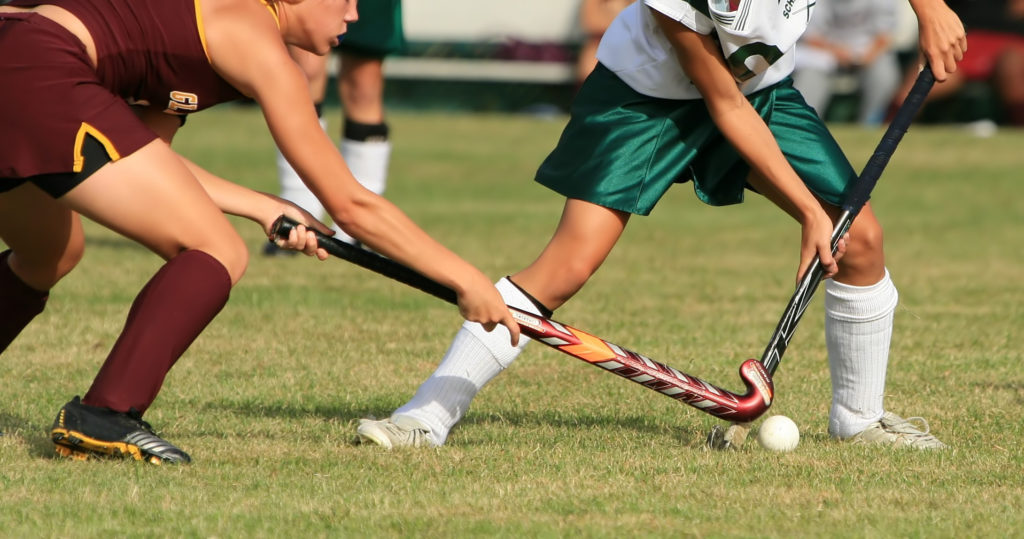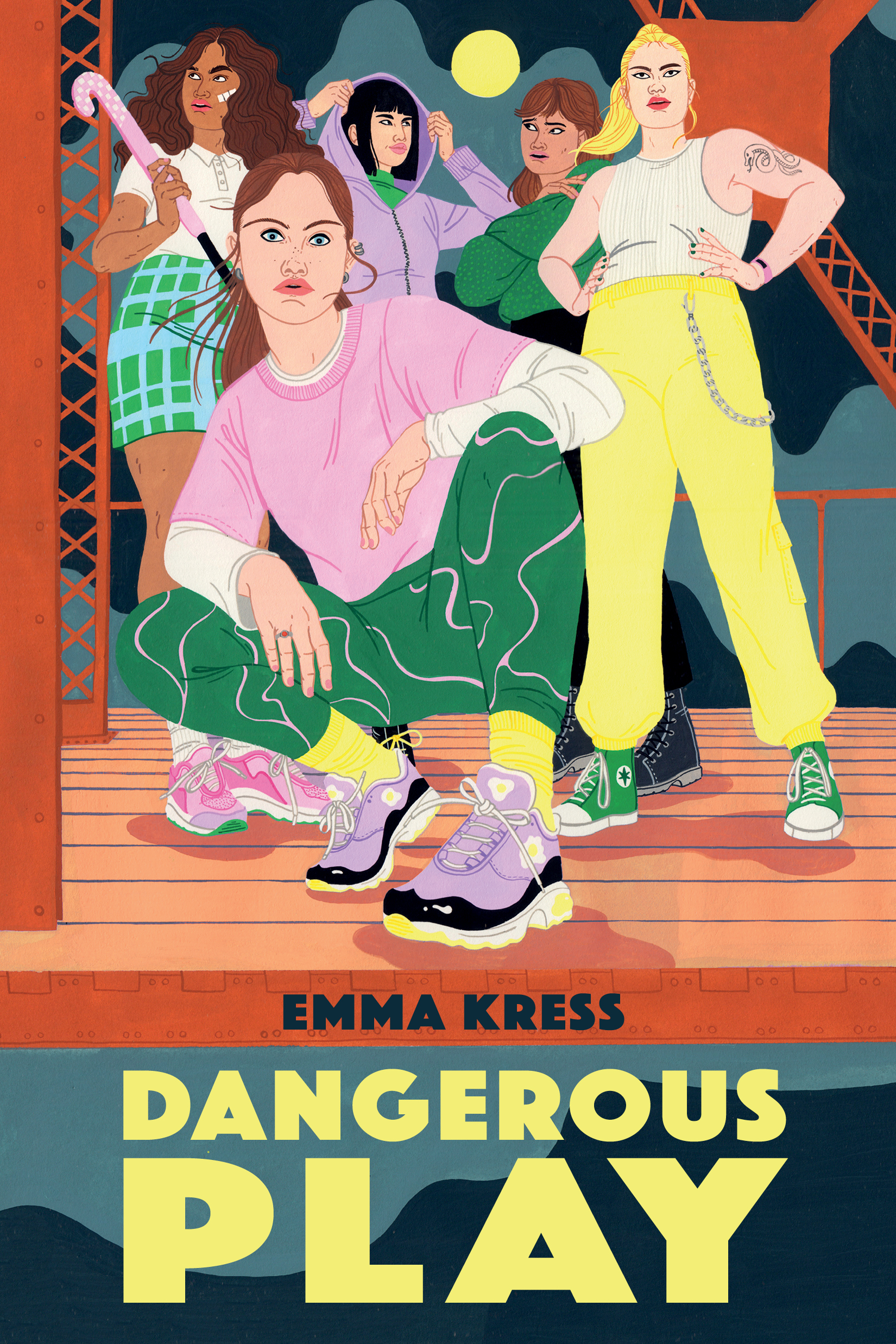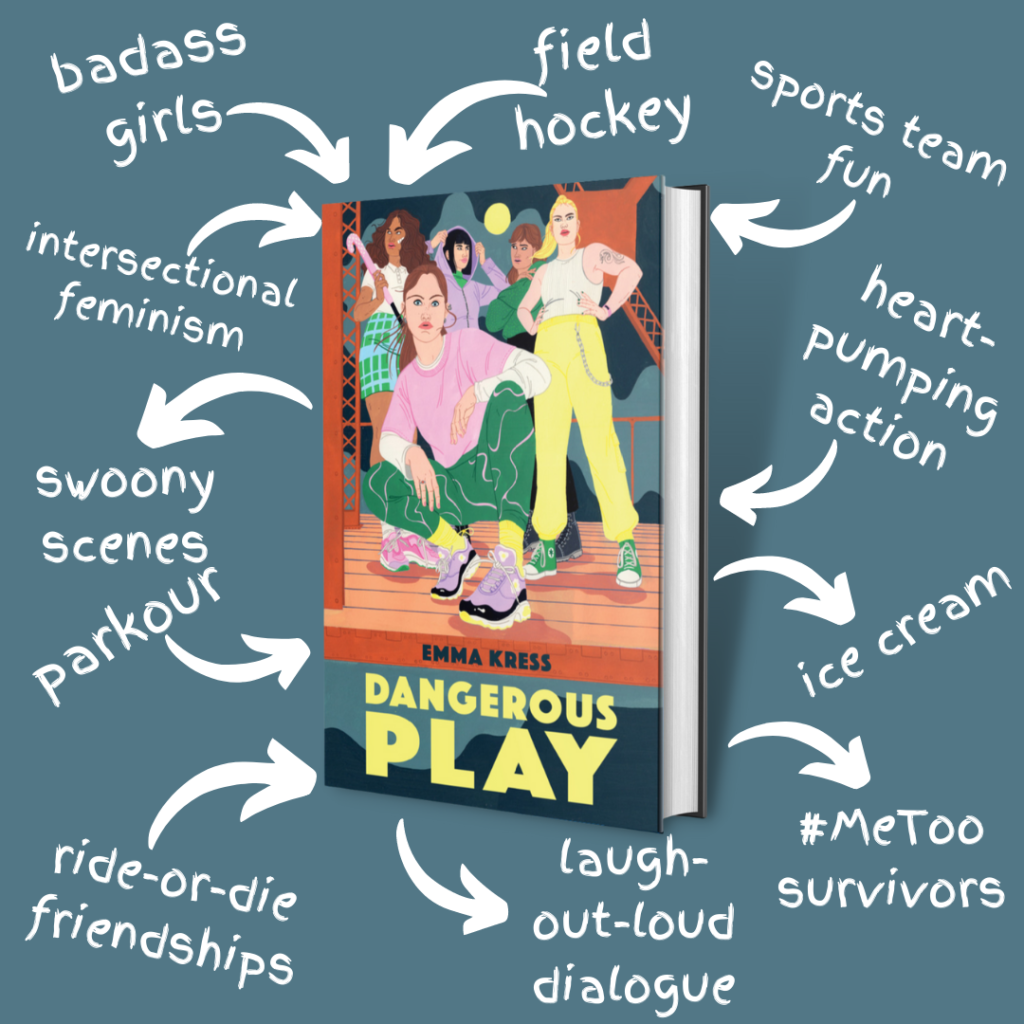A baseball or basketball game can last a long time. There are breaks in the action for timeouts, commercials, switching positions, etc. There might be cheerleaders or a rousing rendition of “Take Me Out to the Ball Game.” And even in the actual game play, there are a lot of moments that don’t really matter in the larger scheme of things. But if you watch the report on the evening news, chances are, you’ll hear the score, maybe one or two key exciting plays, and see one person making a basket or touching home base.
When writing about sports, you need to consider the whole range of possibilities for incorporating games. Sometimes you might need to just report the score. Sometimes you’ll need the nightly news summary. Sometimes you’ll need the highlights reel with commentary. Sometimes you’ll need the detailed play-by-play of a certain section of the game. (Honestly, it would take a very special book to include a play-by-play of an entire game effectively.)
Emma Kress’s debut YA novel, Dangerous Play, has plenty of action and a lot of games. (Read our interview with Emma Kress here.) It’s a book about a girls’ field hockey team who uses parkour to supplement their summer training, and puts those skills to use as vigilantes against perpetrators of sexual assault. It takes place over an entire hockey season, and Kress makes smart choices about how to condense the many field hockey games so that each one serves the story, especially by manipulating pacing and creating tension.
Let’s take a look at two games–one from the beginning of the novel and one from later–to see the elements that Kress plays with to create and amplify tension, and most importantly to help readers feel the games.
At the Start: Action (verbs) and Exposition
In Chapter 1, Kress establishes a large cast of characters, the field hockey vibe, the goals of the main character, and hints at some of the darker themes that will show up later in the book. (You can read the full first chapter here.) There’s a lot she has to do! Kress’s strategy for a vibrant field hockey game played on the beach is to, actually, not show us that much of the field hockey game. Instead, she gives us the feel of the game with some great verbs and a bit of exposition.
We knock sticks and run to position. “Sticks Chicks!” Our two centers tap the ground beside the ball and click sticks three times before each tries to strike it. Green wins the ball and takes off, and Blue swears as we whoop toward the goal.
Sticks beat shins, faces eat sand, and arms throb from whacking the sand dunes that rise and dip around us. Beach hockey makes for some mad conditioning. After months of training plus a summer of midnight games, our bodies are weapons-grade. And it doesn’t matter what’s happening at home or that school’s starting soon because beaches and moonlight make everything better. When we break for water, we’re panting, but smiling.
First, notice that the passage focuses on the team as a whole (both those playing Blue and those playing Green): “We knock sticks,” “our bodies,” “we’re panting.” The only specific players called out are “our two centers”–we don’t know their names at this point, and it doesn’t matter. We are with the collective group playing the game.
Next, notice the use of strong verbs and the sentence lengths. Strong verbs keep the action moving: knock, run, tap, click, whoop, beat, eat, throb, panting. The sentences come at a quick clip at the start. But the sentence that gives us the pace of the game is the first one in the second paragraph: “Sticks beat shins, faces eat sand, and arms throb from whacking the sand dunes that rise and dip around us.” The first two three-word phrases feel punchy. The next sentence mimics the rises and dips of the dunes with it’s punctuating verbs–throb, whacking, rise, dip. The section ends with another sentence with short punchy clauses: “When we break for water, we’re panting, but smiling.”
What happens in between the fast-paced beginning and the quick-burst ending is really interesting. The whole of the game happens while Zoe, our narrator, gives us context about the game itself, summer training, and how she (and the team) feels about playing after having trained so hard. It’s the perfect time for exposition because as readers we need time to pass. Kress can use longer sentences to separate us from the game itself; they give the sense of freedom that these players have at the end of summer.
Within this unhurried section, there’s one image/phrase that really stands out: “our bodies are weapons-grade.” It stands in contrast to the beach scene that “makes everything better” and gives us a context for both the games–these are fierce and committed field hockey players–and hints toward some of the larger issues in the book–how women’s bodies are treated and seen, and how women can claim their own bodily autonomy.
Kress gives us the feel of the game, without giving the play-by-play, and in this early scene, it’s very effective. She emphasizes what’s important about the game and still keeps the pace fast, both through very specific action sections and by condensing the whole game into a three-sentence exposition section.
Later: Layering in Tension
In Chapter 37, the team plays a very important game. I’m not going to spoil it for you (you should absolutely go pre-order the book so you can read it when it comes out on August 3), but I do want to point out some of the techniques Kress uses in a scene where we know the characters, where tensions are high, and where the stakes are high.
At the beginning of the game, Kress goes for feel, just like she did at the start, but this time it’s the chaos of the game instead of the freedom:
The whistle blows.
The game is a mess of sticks, a blur of kilts. We fill the arena with our yells, intertwining with the crowd’s. We’re at our goal, we’re at their goal, we’re back again. I try to direct the chaos, but their sweeper and goalie block us every time. Still, Dylan and Ava are a wall at the end of the field, keeping them at bay.
Again, Kress uses strong words: mess, blur, yells, chaos, block, wall. The clauses in the sentences are short. She eliminates the word “and” in the first and third sentences (a literary device called asyndeton). All of this keeps the pace fast.
The crowds add to the energy of the game. As you read the book, notice how Kress uses the crowds–both the collective crowd and specific members of the crowd–to amplify the energy and emotion of different games.
Because this is a first-person book, we’re always in Zoe’s perspective, but we get a close up view of her action in the midst of the game, which puts the readers into the game as well–”I try to direct the chaos.” She doesn’t list specific actions, but the general description here gives us a sense of the whole being chaotic, and the fact that the other team “blocks us every time” shows that these are repeated actions over a longer period of time.
The paragraph ends with a contrast to all the action and chaos–Dylan and Ava, the defenders, described as “a wall,” protecting their goal.

The game action continues for just one more paragraph to get us to half-time. Kress condenses a 35-minute half into two paragraphs, but the fast pace and action make us feel the team’s exhaustion heading into the locker room.
Kress then uses the locker room interactions between coach and players to give us a barometer for their performance. Coach says, “‘Any other year, this team would have us crying into the turf by now.’” They have long odds, and they are performing well.
During the second half of the game, which lasts roughly five paragraphs, Kress uses many of the same techniques to keep the energy high and the pacing quick. She carefully chooses moments to zero in on one character or another to up the tension. For instance, one character swears and gets a yellow card. We also get interiority, where in a moment of possible defeat, Zoe thinks, “No. This is our year.”
At the climax of the scene, Kress shifts from visual and visceral action to sound: “The ball disappears in a jumble of sticks and shins. I hear the taps but I can’t place it, and then there’s a crack.” This sensory shift puts us in the moment, fully in Zoe’s perspective, and amps up the tension–we have no idea what is going to happen; we can’t even see the ball!
In this later game, Kress again is most interested in feel–creating the experience of the game for readers, while not taking up too much space on the page. She doesn’t need to do any exposition because all the important information and context has been set up earlier in the novel. She zooms in on specific moments that amp up tension, and chooses the most important times to go into a detailed play-by-play, almost transitioning into slow motion. Everything in the section is intended to build the tension toward the climactic moment. The game is its own small story that has its own small story arc.
Now it’s YOUR Turn
Read Dangerous Play and analyze other field hockey game scenes. How does Kress use verbs, sentence structure, zooming in, point of view, crowds, and tension-building moments differently in each? How do the techniques support the purpose of the scene, the feel of the game, and Zoe’s emotional state?
In your own scenes:
- Circle every verb, then make each one the strongest you can.
- Hit return after every sentence so you can see the sentence lengths relative to each other in your document. Make sure the sentence lengths (and clause lengths) are supporting the pace you need.
- Identify where you summarize the action and where you zoom in on a particular moment. Are they balanced well? Do the moments you zoom in on serve to increase the tension of the scene?
- Read your scene aloud, or have someone read it aloud to you.
- Does the scene feel well paced? Are there places where the action slows down too much? (look at verbs and sentence length again)
- Are there places where the action isn’t clear? (try going either more summary or more play-by-play; see which one works better)
- Is the game too long? (condense with more summary sections)
For more from KidLit Craft on TENSION, check out these posts:
BUILDING ENGAGING STORIES THROUGH CONFLICT AND TENSION: SOMETHING TO SAY BY LISA MOORE RAMÉE
ALL THE IMPOSSIBLE THINGS: SEEDING TENSION MAXIMIZES THE READING EXPERIENCE
Anne-Marie Strohman (co-editor) writes picture books, middle grade novels, and young adult short stories and novels. She is trained as a teacher, an editor, and a scholar, specializing in Renaissance Literature. She holds an MFA in Writing for Children and Young Adults from Vermont College of Fine Arts and is an active member of SCBWI. Find her at amstrohman.com and on Twitter @amstrwriter.


COMMENTs:
0